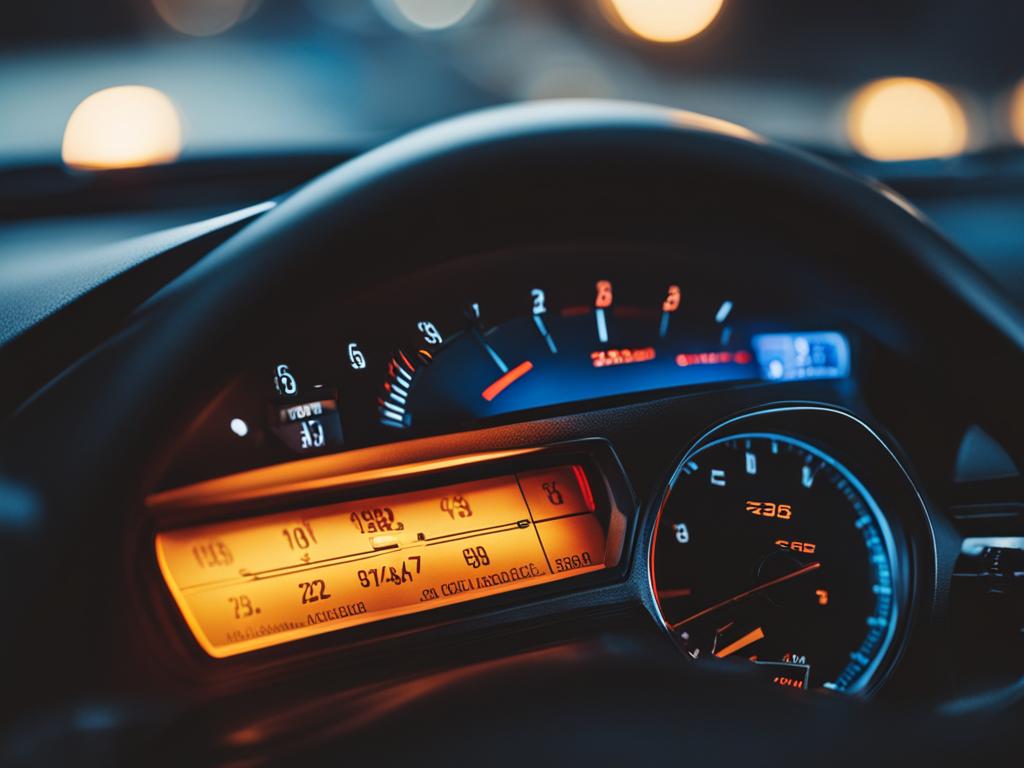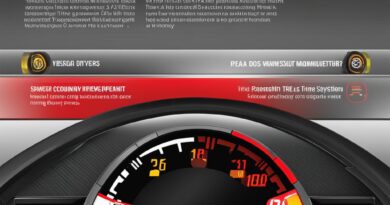Wrench Light on Honda: What Does It Indicate?
The wrench light on a Honda’s dashboard is a warning indicator that signals the need for scheduled maintenance. It is a reminder for you to take your vehicle in for service as indicated by the owner’s manual. The wrench light does not indicate a specific problem with your vehicle but serves as a prompt to keep up with routine maintenance to ensure the optimal condition of your vehicle. The maintenance minder system in Honda vehicles adjusts maintenance intervals based on engine operation, driving habits, and climate. The system uses various sensors to monitor your car and alerts you through the wrench light when it’s time for service. The maintenance minder codes and subcodes provide specific instructions on the type of service needed, such as oil changes, tire rotation, replacing filters and fluids, and checking various components. By following the maintenance minder system, you can prevent problems before they occur and save time and money on unnecessary service.
Key Takeaways:
- The wrench light on a Honda’s dashboard indicates the need for scheduled maintenance.
- This warning light is a reminder to keep up with routine maintenance as indicated by the owner’s manual.
- The maintenance minder system in Honda vehicles adjusts maintenance intervals based on engine operation, driving habits, and climate.
- Understanding the maintenance minder codes and subcodes can help you determine the specific service needed.
- Following the maintenance minder system can help prevent problems and save you time and money on unnecessary service.
Understanding the Maintenance Minder System
The maintenance minder system in Honda vehicles is designed to assist drivers in keeping track of scheduled maintenance. It uses a combination of sensors and onboard computer systems to monitor engine operation, driving habits, and climate conditions. Based on this data, the system calculates service needs and alerts the driver through the wrench light on the dashboard.
The wrench symbol indicates that it is time for service, but the specific service needed can be determined by referencing the maintenance minder codes and subcodes. These codes are denoted by letters and numbers and provide instructions for various maintenance tasks such as oil changes, tire rotations, filter replacements, fluid changes, and inspections.
By understanding the maintenance minder system and following the recommended service intervals, you can ensure the proper maintenance of your Honda vehicle. Let’s take a closer look at the maintenance minder codes and subcodes:
Maintenance Minder Codes and Subcodes:
| Main Codes | Description |
|---|---|
| A | Engine oil replacement |
| B | Full servicing, including oil change, oil filter replacement, brake inspection, and more |
| Subcodes | Description |
|---|---|
| 1 | Tire rotation |
| 2 | Air cleaner element and other filter replacements |
| 3 | Transmission fluid change |
| 4 | Spark plug and timing belt replacement |
| 5 | Coolant replacement |
| 6 | Differential fluid replacement |
By familiarizing yourself with these codes, you can understand the specific service requirements indicated by the wrench light. It’s important to address these maintenance tasks promptly to ensure the optimal performance and longevity of your Honda vehicle.
Decoding the Maintenance Minder Codes
The maintenance minder system in Honda vehicles uses codes and subcodes to indicate the specific service needed for your vehicle. Understanding these codes can help you address the maintenance requirements indicated by the wrench light on your dashboard.
There are two main codes in the maintenance minder system: code A and code B. Code A signifies the need to replace the engine oil, while code B indicates that a full servicing is required. A full servicing typically includes an oil change, oil filter replacement, brake inspection, and other specific checks based on your vehicle model.
In addition to the main codes, there are subcodes numbered 1 to 7. Each subcode represents a different maintenance task that may be required. Here is a breakdown of the subcodes and their corresponding maintenance tasks:
- Subcode 1: Tire rotation
- Subcode 2: Replacement of the air cleaner element and other filters
- Subcode 3: Transmission fluid change
- Subcode 4: Spark plug and timing belt replacement
- Subcode 5: Coolant replacement
- Subcode 6: Replacement of differential fluid
Familiarizing yourself with these codes can help you understand the specific service requirements indicated by the wrench light. By addressing the maintenance needs as indicated by the codes, you can keep your Honda vehicle in optimal condition and avoid potential problems.

Resetting the Maintenance Minder System
Resetting the maintenance minder system is a simple process that you can do yourself, without the need for any special tools. To reset the system, follow the instructions outlined in the owner’s manual or refer to the Honda Reset Instruction guide.
The reset procedure typically involves the following steps:
- Press and hold a button on the dashboard until the maintenance minder display starts flashing.
- Release the button momentarily and then hold it again until the display resets to 100%.
This process will clear the maintenance reminder and allow the system to start tracking maintenance intervals from that point forward.
It’s important to note that resetting the maintenance minder system does not eliminate the need for regular maintenance. It simply allows the system to accurately track the next service interval based on your vehicle’s current condition and usage.
Note: The image above shows the example of a Honda wrench light that indicates the need for maintenance.
Importance of Routine Maintenance
Routine maintenance plays a crucial role in ensuring the optimal performance and longevity of your Honda vehicle. By following the maintenance minder system and addressing the service requirements indicated by the wrench light, you can prevent potential problems and breakdowns, keeping your vehicle in top condition.
Regular oil changes are essential for maintaining the health of your engine. Fresh, clean oil helps reduce friction, lubricates the moving parts, and keeps the engine running smoothly. It’s also important to replace filters regularly to ensure proper airflow and prevent contaminants from entering the engine.
Fluid changes are another vital aspect of routine maintenance. Over time, fluids such as coolant, transmission fluid, and brake fluid can become contaminated or break down, affecting the performance of these crucial components. Regular fluid changes help maintain optimal function and protect against potential damage.
In addition to fluid changes, routine inspections are necessary to identify any potential issues. Regular inspections allow certified Honda technicians to detect early signs of wear, leaks, or other problems that may not be obvious to the untrained eye. By addressing these issues promptly, you can prevent them from escalating into more significant and costly repairs.
Benefits of Routine Maintenance:
- Optimal vehicle performance
- Improved fuel efficiency
- Enhanced safety
- Extended vehicle lifespan
- Reduced risk of major repairs
Ignoring routine maintenance can have serious consequences. Neglecting oil changes, filter replacements, fluid changes, and inspections can lead to reduced fuel efficiency, decreased performance, and even engine damage. By keeping up with the recommended service intervals outlined in your owner’s manual and consulting with a certified Honda technician, you can ensure that your vehicle receives the care it needs.
To summarize, prioritizing routine maintenance is essential for enjoying a reliable and efficient driving experience with your Honda vehicle. By following the maintenance minder system and addressing the service requirements indicated by the wrench light, you can maintain optimal performance, maximize the longevity of your vehicle, and avoid costly repairs down the road.
Conclusion
In conclusion, the wrench light on a Honda dashboard serves as a crucial reminder for scheduled maintenance. Understanding the maintenance minder system, decoding the codes and subcodes, and resetting the system when necessary are integral parts of proper vehicle maintenance. By following the maintenance minder system and addressing the service requirements indicated by the wrench light, Honda owners can ensure the optimal performance, safety, and longevity of their vehicles. Routine maintenance plays a vital role in preventing potential problems and maximizing the reliability of Honda vehicles.
By staying proactive and attentive to the maintenance needs indicated by the wrench light, you can enjoy a smooth and worry-free driving experience. It is important to prioritize regular service and consult with a certified Honda technician for any specific concerns or questions. Remember, the maintenance minder system is designed to assist you in keeping your vehicle in top condition, so be sure to follow the recommended service intervals outlined in the owner’s manual.
Keep in mind that neglecting routine maintenance can lead to reduced fuel efficiency, decreased performance, and potential engine damage. By giving proper attention to the maintenance needs indicated by the wrench light, you can avoid these issues and enjoy the optimal performance and longevity of your Honda vehicle. So, make sure to address the service requirements promptly and take advantage of the maintenance minder system to keep your Honda running smoothly for years to come.
FAQ
What does the wrench light on a Honda dashboard mean?
The wrench light on a Honda’s dashboard is a warning indicator that signals the need for scheduled maintenance. It serves as a reminder for the driver to take the vehicle in for service as indicated by the owner’s manual. The wrench light does not indicate a specific problem with the vehicle but prompts the driver to keep up with routine maintenance to ensure the optimal condition of the vehicle.
How does the maintenance minder system in Honda vehicles work?
The maintenance minder system in Honda vehicles adjusts maintenance intervals based on engine operation, driving habits, and climate. It uses various sensors to monitor the car and alerts the driver through the wrench light when it’s time for service. The maintenance minder codes and subcodes provide specific instructions on the type of service needed, such as oil changes, tire rotation, filter replacements, and more.
How can I reset the maintenance minder system on my Honda?
Resetting the maintenance minder system is a simple process that can be done by the vehicle owner without the need for any special tools. The procedure typically involves pressing and holding a button on the dashboard until the maintenance minder display starts flashing, then releasing and holding the button again until the display resets to 100%. This process clears the maintenance reminder and allows the system to start tracking maintenance intervals again.
What are the main codes and subcodes of the maintenance minder system?
The main codes, designated by letters A and B, indicate the specific service needs of a Honda vehicle. Main code A signifies the need to replace the engine oil, while main code B indicates a full servicing including an oil change, oil filter replacement, brake inspection, and other checks. Subcodes numbered 1 to 7 represent different maintenance tasks such as tire rotation, filter replacements, fluid changes, and inspections.
Why is routine maintenance important for my Honda vehicle?
Routine maintenance is essential for the optimal performance and longevity of a Honda vehicle. Following the maintenance minder system and addressing the service requirements indicated by the wrench light can help prevent potential problems and breakdowns. Regular maintenance tasks such as oil changes, filter replacements, and fluid changes ensure that the engine and other vital components are properly maintained, resulting in improved fuel efficiency and performance.




